THE ROSS SEA
__________________
__________________
| Day | Place | Highlights |
|---|---|---|
| Day 1 | Ushuaia, Argentina | Board the Le Commandant Charcot ahead of an incredible voyage |
| Days 2 & 3 | Crossing the Drake Passage | Cross this iconic stretch of water |
| Day 4 | Crossing the Antarctic Circle | Weather permitting, cross the mythic Antarctic Polar Circle |
| Day 5 | Expedition to Charcot Island | Explore the waters that attract seabirds, petrels, Antarctic terns and skuas |
| Day 6 | Expedition to Peter I Island | This difficult to approach volcanic islands highest peak measures 1,640m |
| Day 7 & 8 | Bellingshausen Sea | Keep an eye out for Emperor penguins who frequent these waters |
| Day 9 | At Sea | Relax on board your luxurious expedition vessel |
| Day 10 | Siple Island | Mount Siple rises to 3,000 metres |
| Day 11 | At Sea | Watch for wildlife surrounding the ship |
| Day 12 | Ruppert Coast | Abandoned in 1990, this territory is terra nullius, meaning it is not claimd by any country |
| Day 13 | Cape Colbeck | This cape delimits the western portion of the vast bay that contains the Ross Sea |
| Day 14 | The Ross Sea | This region is currently the world's largest marine protected area |
| Day 15 | The Ross Ice Shelf | The largest ice shelf in the world, the Ross Ice Shelf has a surface area equivalent to France |
| Day 16 | At Sea | Take this time at sea to reflect upon this incredible adventure |
| Day 17 | Ruppert Coast | Explore these unique, rarely visited waters |
| Day 18 | At Sea | Be in awe of the beauty surrounding your ship |
| Day 19 | Burke Island | This ice covered island is 30km long and 11km wide |
| Days 20 & 21 | Expedition to Peter I Island | This island is 95% covered in ice |
| Day 22 | At Sea | Start your journey back to South America |
| Days 23 & 24 | Crossing the Drake Passage | Re-journey across the Drake Passage as you come to the end of your adventure |
| Day 25 | Ushuaia, Argentina | Disembark the Le Commandant Charcot |
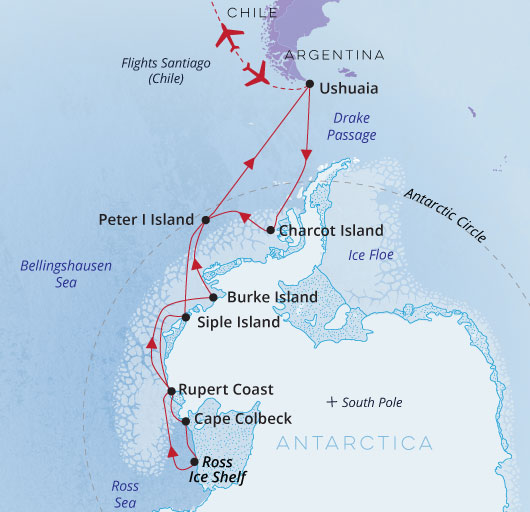
Hailing as the world’s first hybrid luxury polar exploration vessel, the Le Commandant Charcot combines the top tier of luxury with sustainable development at the heart of the design. Equipped with 135 luxury staterooms featuring elegant and warm stone, wood and leather detailing’s to reflect the natural environment that the ship will be sailing in, the Le Commandant Charcot is setting a new level for opulence in the polar regions. What makes the Le Commandant Charcot so special is her ice-breaking capabilities allowing her to travel to the furthermost, remote reaches of the globe whilst still experiencing unprecedented luxury. Electricity integrates with engines running on Liquefied Natural Gas (LNG) exceeding the current applicable environmental regulations with the capability of hybrid electric mode which produces zero emissions. There will be on board recycling of waste and an advanced wastewater treatment along with waste heat recovery systems in place. There will also be a scientific laboratory on-board equipped to study the ecosystems and biodiversity of the polar settings that you are exploring.
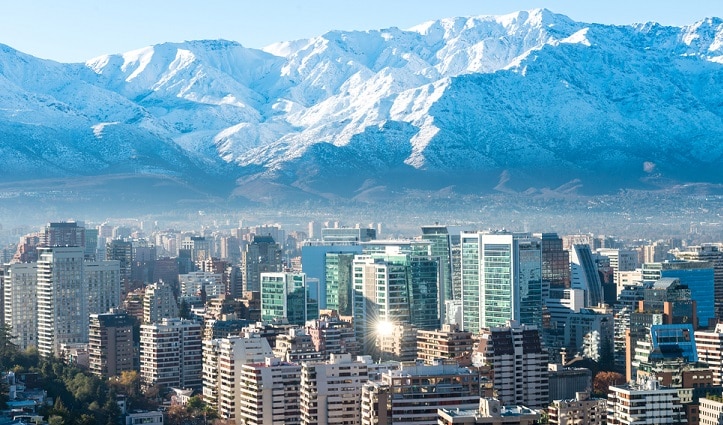
-One night’s accomodation in Santiago in 5* hotel
-Return Santiago/Ushuaia economy class flights
-Transfer and meals as detailed
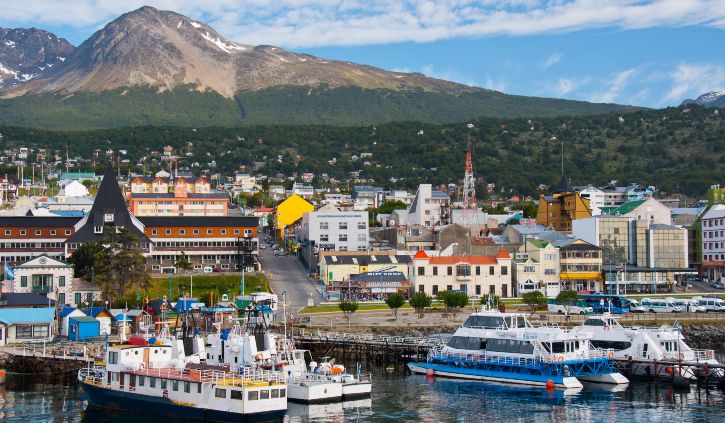
Capital of Argentina’s Tierra del Fuego province, Ushuaia is considered the gateway to the White Continent and the South Pole. Nicknamed “El fin del mundo” by the Argentinian people, this city at the end of the world nestles in the shelter of mountains surrounded by fertile plains that the wildlife seem to have chosen as the ultimate sanctuary. With its exceptional site, where the Andes plunge straight into the sea, Ushuaia is one of the most fascinating places on earth, its very name evocative of journeys to the unlikely and the inaccessible.
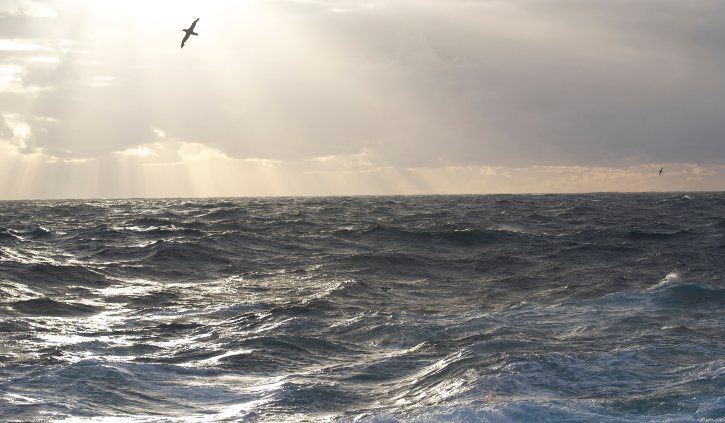
Use your days spent in the Drake Passage to familiarise yourself with your ship and deepen your knowledge of the Antarctic. The Expedition Leader will first present the IAATO rules of conduct that must be observed during landings in the region and will explain everything you need to know about the Zodiac outings. Lectures about the history and wildlife of the Antarctic will be an opportunity for you to learn more about this magical region, where every cruise is a unique experience. From the ship’s bridge, you will experience exceptional sailing moments before joining the naturalist-guides on your ship’s exterior decks to look out for albatrosses, cape petrels, and other seabirds flying over the Drake Passage.
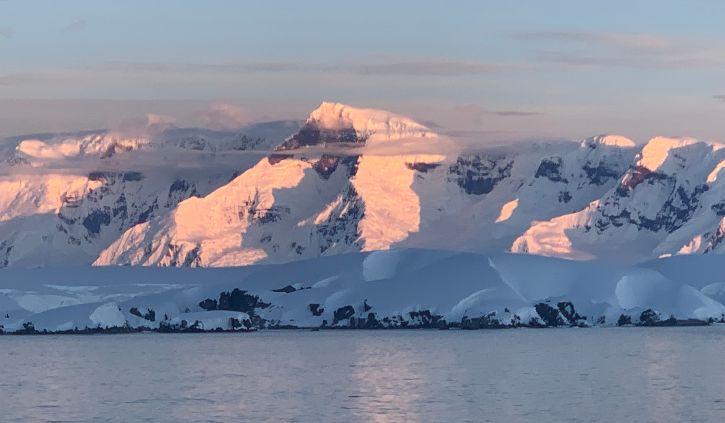
Weather permitting, the ship will cross the mythic line of the Antarctic Polar Circle, located along 66°33’ south of the Equator. This iconic area demarcates the point from which it is possible to view the midnight sun during the December solstice. Within this circle, the sun remains above the horizon for 24 consecutive hours at least once a year. Crossing this line, an experience known to few people, is sure to be an unforgettable highlight of your cruise through the polar regions.
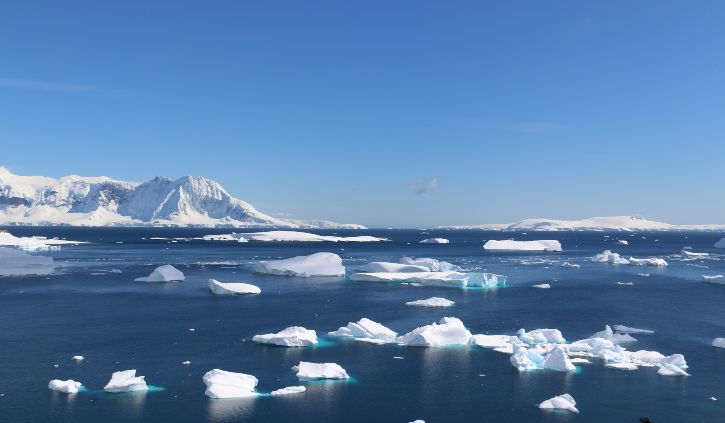
When he discovered this island surrounded by sea ice in 1910 from aboard the Pourquoi Pas? as he mapped Alexander Island, Jean-Baptiste Charcot had not be able to get less than 40 miles away from it. Situated in a zone that experiences frequent low-pressure systems and regular cloud cover, the island remains in many ways an enigma. It is entirely covered in ice and sheer cliffs, with the exception of the rocky outcrops extending over a dozen kilometres in the far north-west. The ice in the narrowest part of Wilkins Sound has been cracking in recent times, thus officially detaching this island from its neighbour, Alexander Island, lying 50km away. Very few people have landed on this largely untouched island, whose waters attract numerous seabirds, such as petrels, Antarctic terns and skuas.
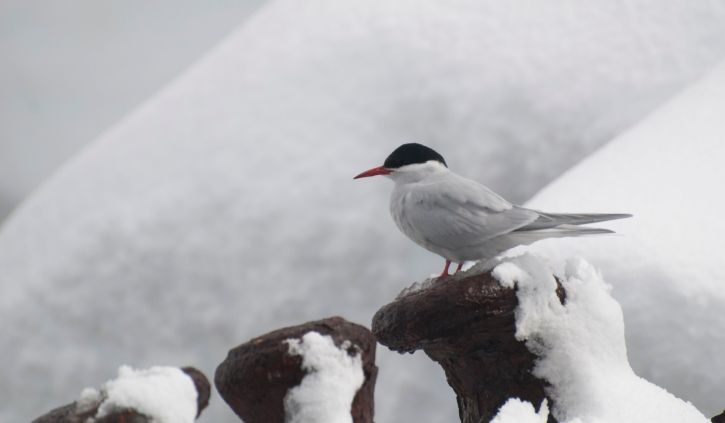
You will then head for the legendary Peter I Island. Located 450km away from the Atlantic coast, it was discovered in 1821 by the Russian explorer Fabian Gottlieb von Bellingshausen, who named it in honour of the Russian tsar Peter the Great. In 1909, Captain Charcot sighted it for the first time from aboard the Pourquoi Pas?, but was unable to land there: “In the parting mists, one or two miles away, an enormous black mass shrouded in clouds appears suddenly before us: it is Peter I Island.” Surrounded by pack ice and with about 95% of its surface covered by ice, this volcanic island, whose highest peak reaches 1,640 metres, is protected by ice cliffs some 40 metres tall, making any approach difficult.

Stretching from the west side of the Antarctic Peninsula to the Amundsen Sea, the Bellingshausen Sea was named after the Russian admiral and explorer who has been attributed the first confirmed sighting of mainland Antarctica, in 1820. Its waters surround, among others, two of the largest islands in the Antarctic: Alexander Island and Thurston Island. You will sail amid ice floe, blocks of sea ice and majestic icebergs. The coastal areas along the Bellingshausen Sea are home to large colonies of emperor penguins. Depending on the season, you may get the chance to observe some of these creatures in the open sea.
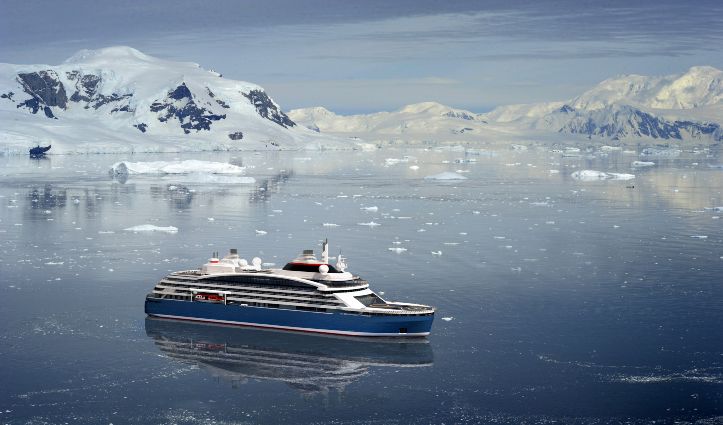
Spend exceptional moments sailing aboard Le Commandant-Charcot, the world’s first luxury polar exploration vessel and the first PC2-class polar cruise ship capable of sailing into the very heart of the ice, on seas and oceans which the frozen conditions render inaccessible to ordinary ships. Le Commandant-Charcot is fitted with oceanographic and scientific equipment selected by a committee of experts. Take advantage of the on-board lectures and opportunities for discussion with these specialists to learn more about the poles. Participate in furthering scientific research to discover together what these fascinating destinations have yet to reveal to us.
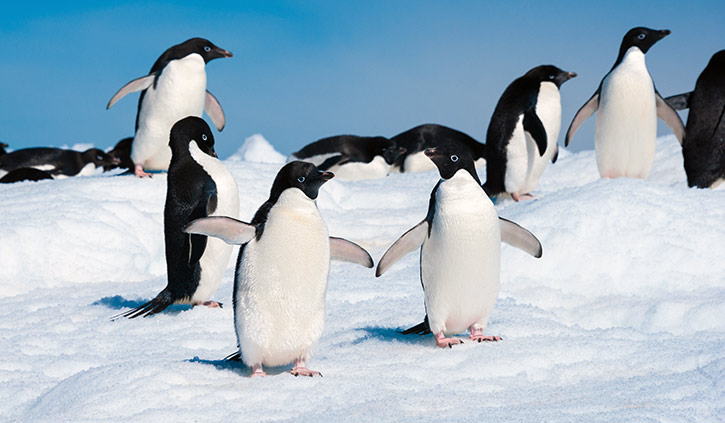
This island is dominated by Mount Siple, a dormant, potentially active shield volcano rising to an altitude of 3,000 metres. Entirely covered in a thick layer of ice, the gentle slopes of this cone are said to have been climbed, but no proof has yet been found of this feat. For now, it is thus considered Antarctica’s highest unclimbed peak. At the foot of this icy giant, you could have the good fortune of being welcomed by a colony of Adelie penguins and of admiring the magnificent Thurston Glacier.
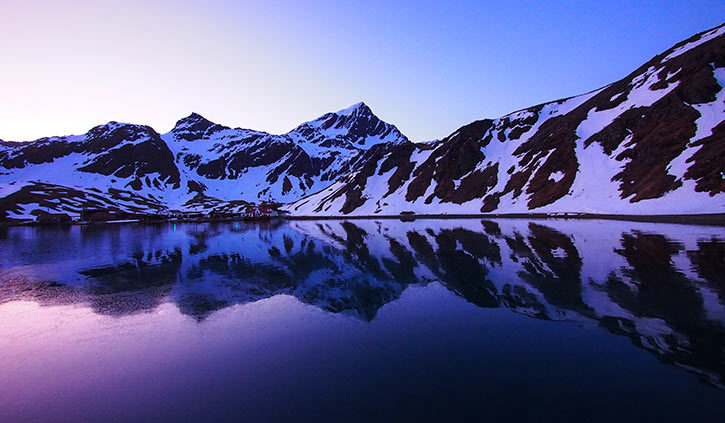
Spend exceptional moments sailing aboard Le Commandant-Charcot, the world’s first luxury polar exploration vessel and the first PC2-class polar cruise ship capable of sailing into the very heart of the ice, on seas and oceans which the frozen conditions render inaccessible to ordinary ships. Le Commandant-Charcot is fitted with oceanographic and scientific equipment selected by a committee of experts. Take advantage of the on-board lectures and opportunities for discussion with these specialists to learn more about the poles. Participate in furthering scientific research to discover together what these fascinating destinations have yet to reveal to us.
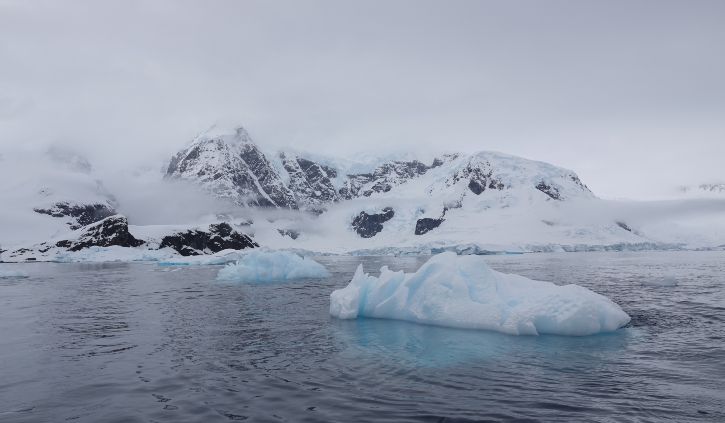
This quasi-unexplored coast along Marie Byrd Land is one of the only territories in the world to have never been claimed by any country, making it a terra nullius. It was the American colonel Jacob Ruppert who made the first aerial reconnaissance flight along this coast, during the second Byrd Antarctic Expedition (1933-1935). A Soviet research station was established there in 1980, before being officially abandoned in 1990.

This ice-covered cape, which forms the northwestern extremity of Marie Byrd Land, was discovered in January 1902 by the British National Antarctic Expedition. It was named in honour of Captain William Colbeck, one of the first explorers to have overwintered in Antarctica, during the Southern Cross expedition of 1899. This majestic cape delimits the western portion of the vast bay that contains the Ross Sea, the world’s largest marine protected area.
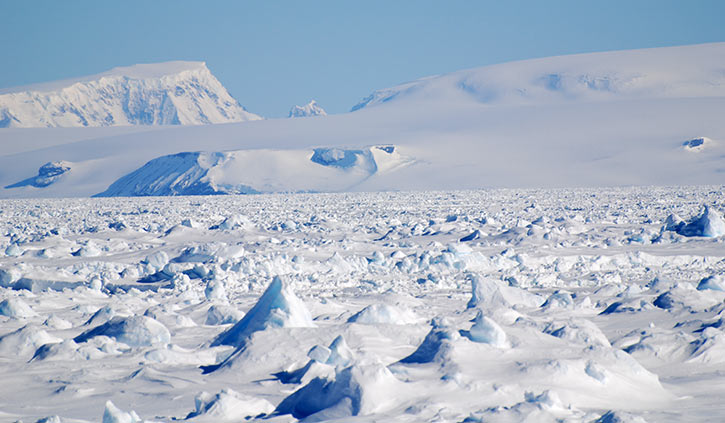
“The last ocean” is what scientists from all around the world call this deep bay that runs along the edge of Antarctica between Marie Byrd Land and Victoria Land. Since 2016, the world’s largest marine protected area has been keeping this last marine ecosystem intact. The theatre of the most impressive expeditions, it was discovered by James Clark Ross between 1839 and 1843. It was then that he discovered the enormous ice barrier formed by a gigantic ice shelf extending out to the open sea and from which titanic icebergs are calved. One third of the world’s Adelie penguin population lives in the area where this barrier breaks into icebergs. The currents maintain polynyas there, vast areas of persistent open water surrounded by sea ice. These give the penguins access to food. You may also get the chance to spot Ross seals, one of the rarest protected species in the Antarctic.
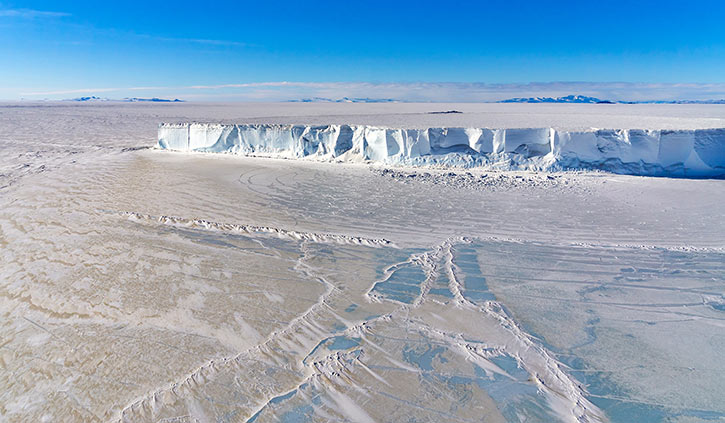
The southern half of the Ross Sea is dominated by the largest ice shelf in the world, with a surface area equivalent to that of France. You will be awestruck by the majesty of this ice barrier which, far from being smooth and uniform, is ridged with caves, deep caverns, ledges, bays and promontories in infinite shades of blue carved out of it by the elements. Its vertiginous walls can reach up to 100 metres above sea level and some of them are several hundred metres deep. According to Sir Ernest Shackleton, some of the cavities could have contained Le Nimrod, his ship during the expedition he led to the South Pole between 1907 and 1909.

Spend exceptional moments sailing aboard Le Commandant-Charcot, the world’s first luxury polar exploration vessel and the first PC2-class polar cruise ship capable of sailing into the very heart of the ice, on seas and oceans which the frozen conditions render inaccessible to ordinary ships. Le Commandant-Charcot is fitted with oceanographic and scientific equipment selected by a committee of experts. Take advantage of the on-board lectures and opportunities for discussion with these specialists to learn more about the poles. Participate in furthering scientific research and discover together what these fascinating destinations have yet to reveal to you.
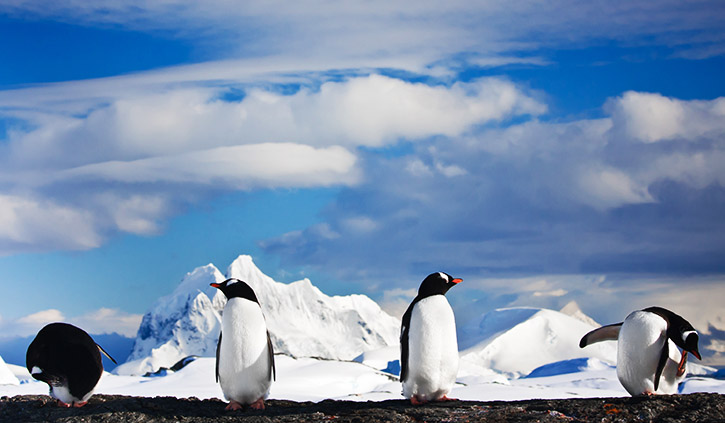
This quasi-unexplored coast along Marie Byrd Land is one of the only territories in the world to have never been claimed by any country, making it a terra nullius. It was the American colonel Jacob Ruppert who made the first aerial reconnaissance flight along this coast, during the second Byrd Antarctic Expedition (1933-1935). A Soviet research station was established there in 1980, before being officially abandoned in 1990.
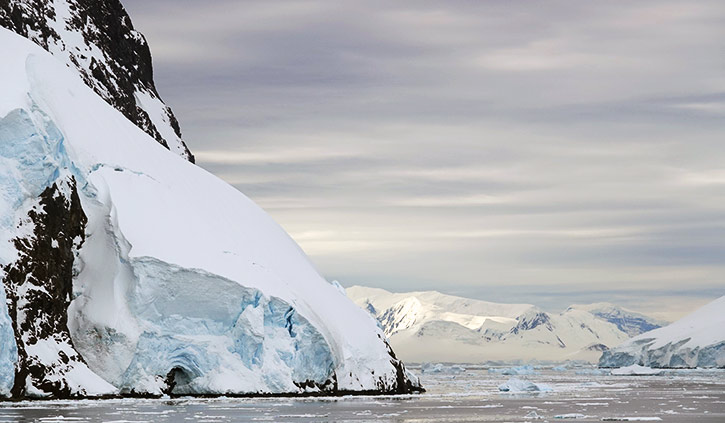
Spend exceptional moments sailing aboard Le Commandant-Charcot, the world’s first luxury polar exploration vessel and the first PC2-class polar cruise ship capable of sailing into the very heart of the ice, on seas and oceans which the frozen conditions render inaccessible to ordinary ships. Le Commandant-Charcot is fitted with oceanographic and scientific equipment selected by a committee of experts. Take advantage of the on-board lectures and opportunities for discussion with these specialists to learn more about the poles. Participate in furthering scientific research and discover together what these fascinating destinations have yet to reveal to you.
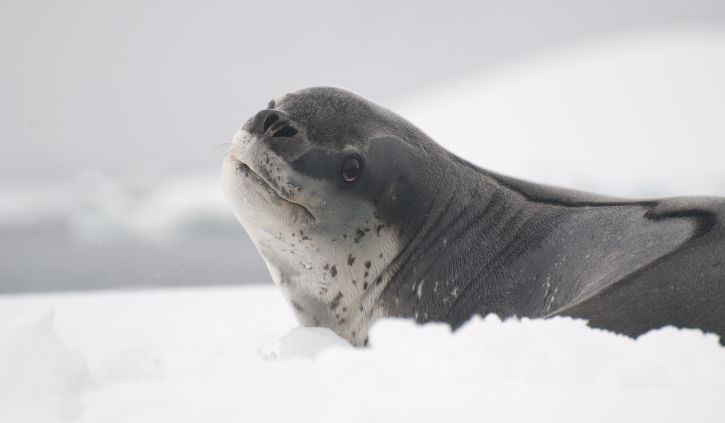
You will then head for the legendary Peter I Island. Located 450km away from the Atlantic coast, it was discovered in 1821 by the Russian explorer Fabian Gottlieb von Bellingshausen, who named it in honour of the Russian tsar Peter the Great. In 1909, Captain Charcot sighted it for the first time from aboard the Pourquoi Pas?, but was unable to land there: “In the parting mists, one or two miles away, an enormous black mass shrouded in clouds appears suddenly before us: it is Peter I Island.” Surrounded by pack ice and with about 95% of its surface covered by ice, this volcanic island, whose highest peak reaches 1,640 metres, is protected by ice cliffs some 40 metres tall, making any approach difficult.

Spend exceptional moments sailing aboard Le Commandant-Charcot, the world’s first luxury polar exploration vessel and the first PC2-class polar cruise ship capable of sailing into the very heart of the ice, on seas and oceans which the frozen conditions render inaccessible to ordinary ships. Le Commandant-Charcot is fitted with oceanographic and scientific equipment selected by a committee of experts. Take advantage of the on-board lectures and opportunities for discussion with these specialists to learn more about the poles. Participate in furthering scientific research and discover together what these fascinating destinations have yet to reveal to you.
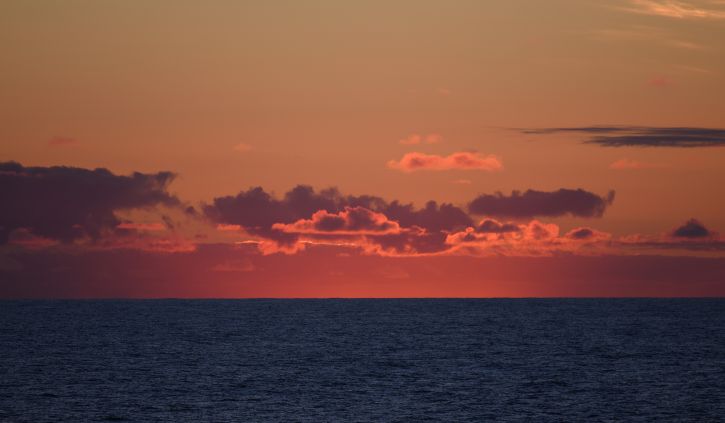
Spend exceptional moments sailing aboard Le Commandant-Charcot, the world’s first luxury polar exploration vessel and the first PC2-class polar cruise ship capable of sailing into the very heart of the ice, on seas and oceans which the frozen conditions render inaccessible to ordinary ships. Le Commandant-Charcot is fitted with oceanographic and scientific equipment selected by a committee of experts. Take advantage of the on-board lectures and opportunities for discussion with these specialists to learn more about the poles. Participate in furthering scientific research and discover together what these fascinating destinations have yet to reveal to you.
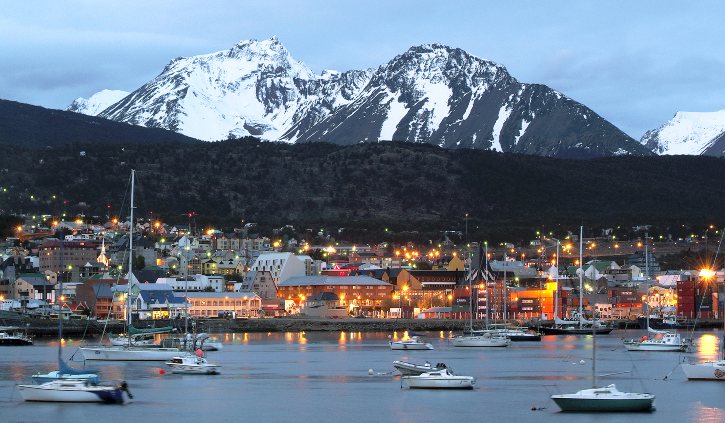
Capital of Argentina’s Tierra del Fuego province, Ushuaia is considered the gateway to the White Continent and the South Pole. Nicknamed “El fin del mundo” by the Argentinian people, this city at the end of the world nestles in the shelter of mountains surrounded by fertile plains that the wildlife seem to have chosen as the ultimate sanctuary. With its exceptional site, where the Andes plunge straight into the sea, Ushuaia is one of the most fascinating places on earth, its very name evocative of journeys to the unlikely and the inaccessible.